Sometimes you want to weave something a little bit different. And sometimes most likely you have some plastic bags just laying around that you keep forgetting to bring with you to the store to recycle.
It happens to all of us.
So what can you do with all of these bags you have stuffed under your kitchen sink?
You can make yarn!
First, why would you want to do that?
Well, what else are you doing with them?
If you haven’t switched over to using reusable grocery bags or you have been ordering groceries more than you used to then you probably have a lot of plastic bags laying around. Since plastic bags can’t be recycled in regular recycling they are often left and forgotten. Instead of holding onto them forever and continuing to tell yourself, you will bring them back to the store one day to recycle.
You can instead use them to make something beautiful and/or useful.
Plastic bags add texture to your weaving
Weaving with plastic bags adds a new type of texture that you are not going to get when using regular yarn. Due to their shine and their loft, they create a more three-dimensional textile than some of your more conventional yarns.
Despite this specific texture, it may not be seen as plastic yarn at first glance.
This makes for a fun surprise for those that see it for the first time.
Great for when you are stuck in a weaving rut
Even if you are not interested in reusing or upcycling plastic bags, breaking outside of your yarn stash can be a fun way to try something new.
You should always allow yourself to experiment and try new things to further your artistic ideas.
You never know what is going to inspire you. Sometimes just the act of trying something new can stir your creative juices and get you ready to plan your next or next few projects.
What You Need:
Plastic bags
Plastic bags are going to come in different colors when they come from different stores. This gives you the ability to have multiple colors in your weaving without having to do anything extra or mix it with yarn if you don’t want to.
While I absolutely do not recommend going out and getting plastic bags purely for their use as weaving materials. This is a great way to use up all of those plastic bags that I know you have shoved in another plastic bag under your sink or in your laundry room.
You know it’s there. (I keep calling you out because really… I’m calling myself out!)
If you are looking for more color options or just more bags in general then ask around for someone else’s plastic bags that they are not using.
Scissors (not fabric scissors!)
I would like to repeat that you shouldn’t be using your fabric scissors to cut your plastic bags! You don’t want to dull them and have them not in top shape when you go back to using them for what they were made for. Instead, just use any other pair of sharp scissors you have laying around.
How to make plarn!
There are 2 different ways to make your plastic yarn. The first way that we are going to go over is the strip method.
This method is not as straightforward as the other method, but it does tend to create more even yarn. If you have ever made t-shirt yarn then this is basically the same method that you use for that. (Learn how to make t-shirt yarn including using the sleeves HERE).
Plastic bag yarn strip method
In order to create your plastic bag yarn you will need to prep your bag. This means you will need to get rid of any seems or extra parts of the bag that go outside the “tube” of the bag.
Cut the bottom seam off the bag as close to the seam as possible to avoid wasting material. Do the same thing to the handles at the top. You can throw these out (or recycle them if you are able!)
Once you cut off the extra parts you will basically have a plastic tube. Fold your bag in half so that the closed sides are together. I have them offset a little so you can see it better, but this is not a necessary step.
Cut up from the bottom folded edge of the bag in 1 inch strips. Stop about an inch from the top edge. If you cut all the way up you will have cut a really skinny tube – so avoid doing that.
Once you are done you can unfold your bag and spread it out.
Cut into the first strip on either side of the bag. This will be the beginning of your plarn.
You will have two parts of your bag that have a large uncut area and you start with either one.
Cut across to each opposite slit (shown in the dotted lines below). Make your way all the way across. When you finish with the first side, turn it over and do the next.
When you get to the very end disconnect the end of your strip by cutting at a diagonal.
Plastic bag yarn spiral method
The second method is a bit more straightforward but a little harder to control. If you want to just sit down and do this while streaming something, this is an easy thing to just do in your seat without a surface.
Start out by prepping your plastic bag the same way we did above. Cut the bottom seam and handles off and throw away or recycle.
Cut into your bag at a diagonal at one of the open ends of your tube. Cut in 1 continuous strip.
That’s it.
Since this method is a little more free form, keeping your strips a consistent width is a little harder, but not impossible.
Making a plastic yarn ball
Once you are finished with your yarn the best way to store it is to create a yarn ball.
Start by wrapping the end of your plastic yarn around your finger tip. Slide it off and continue by wrapping around the loops that you created. Switch directions every wrap or two until you are finished! This yarn can be a bit slippery so try to hold it firmly. If you drop it mid ball then it is not a big deal, but it will unravel some.
When you get to the end just tuck the end of your yarn under one of the wraps to secure it.
Project ideas
Pattern weaving
Weaving patterns can be done with only one color of your plastic bag yarn or multiple colors. If you are weaving a balance weaving then your warp will show through so keep that in mind when choosing the foundation for your weaving. Plastic bags would not make a good warp yarn because they are not strong enough to hold up to the tension required.
The example above was supposed to be a tapestry (oops) that I made while I was a student and playing around with materials. If you want to learn why this is not a tapestry then you can read more about tapestry HERE.
My first ever “tapestry” that I made that was not a sample was made with plastic bags from three different stores and a linen warp. I still love to show my students this weaving as an example of how dynamic weaving can be. You really can weave with almost anything.
Coasters
While I wouldn’t really recommend these plastic bag coasters for something really hot (in other words I wouldn’t use these as a trivet) the plastic bags could make for fun and simple coasters. They won’t take too much time to make but could be an interesting conversation starter.
A year in the life tapestry
If you have ever heard of temperature blankets then this is a similar idea.
You would need a really long warp and a loom that you don’t need access to for anything else for a while or you can make this in panels to attach together at a later time.The idea behind this is to keep all of the plastic bags that you use in a year and weave with them as you get them. Most of the time in projects like these you are working just with simple stripes to mimic a timeline of the year that you are creating.
In this case, you won’t be getting bags from a friend or neighbor to try to get different colors or more materials. Instead, you are recording your actual use over the course of a year. This could be a fun project to do if you are wanting a way to weave at least a little bit everyday. You can save your plastic bags to weave in the order you get them, but only weave one or two a day to spread it out throughout the year. Use this as a way to get into your weaving practice each day, sort of like a warp-up.
This could also be a really great project to do with kids to teach them about waste, recycling, and upcycling. A visual representation of your year in plastic bags can be an eye-opening project to reflect on at the end of the year while still creating something interesting to look at and make.
If you have a favorite non-yarn material that you like to weave with then let me know!
⇣ Love It? Share It! ⇣
You May Also Like




















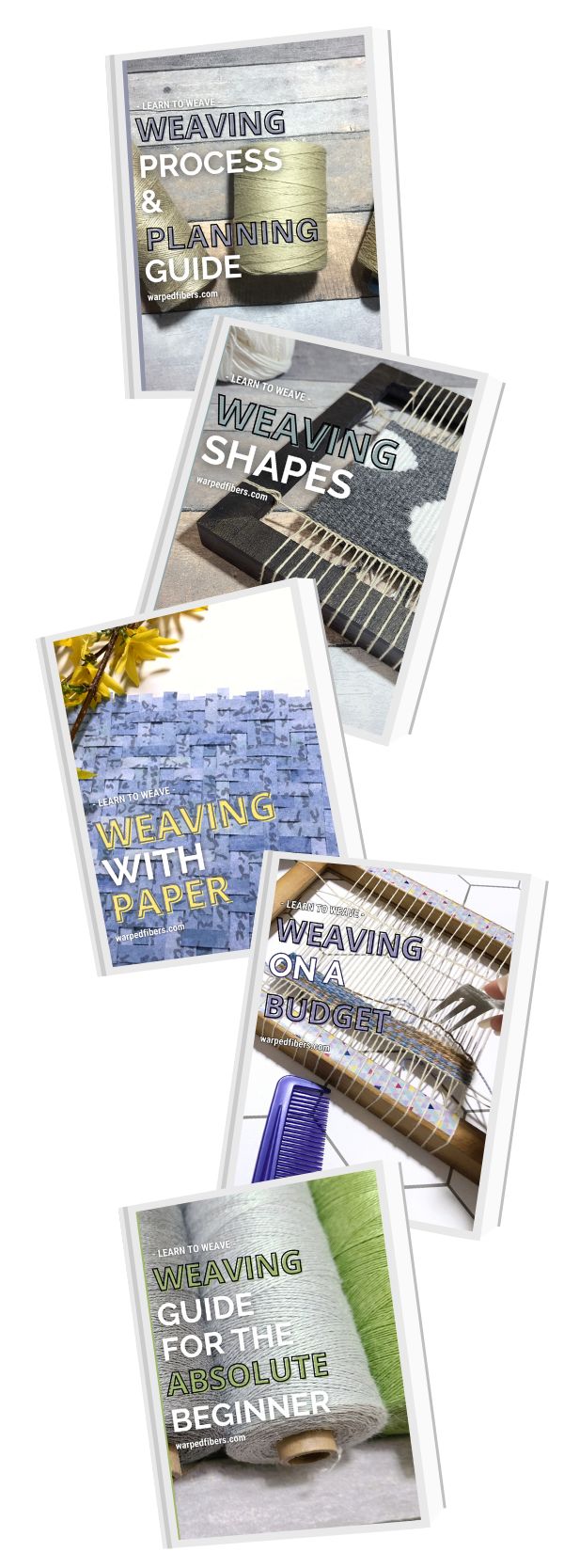
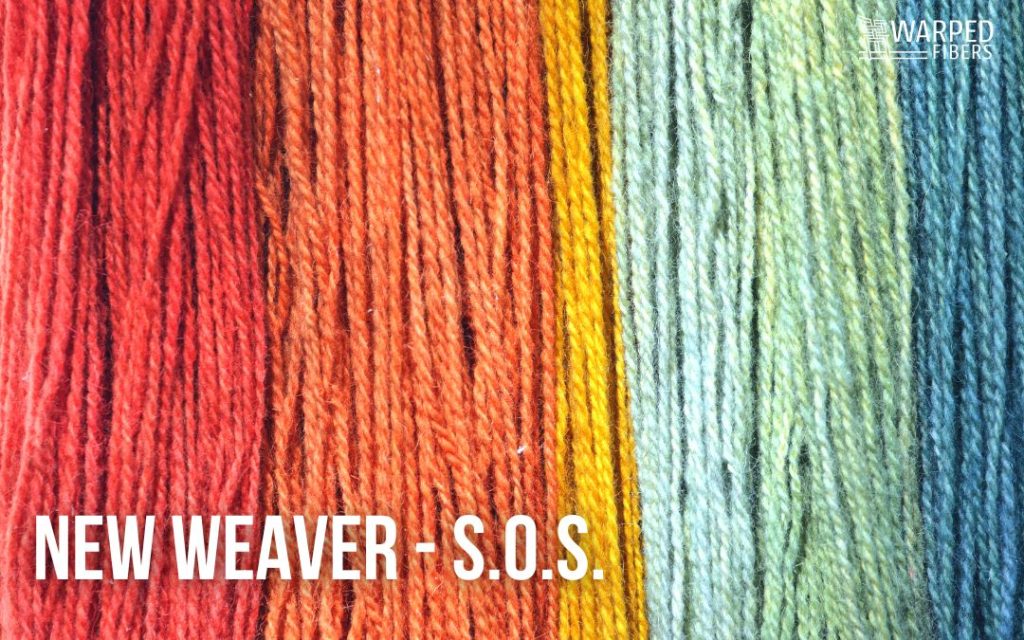

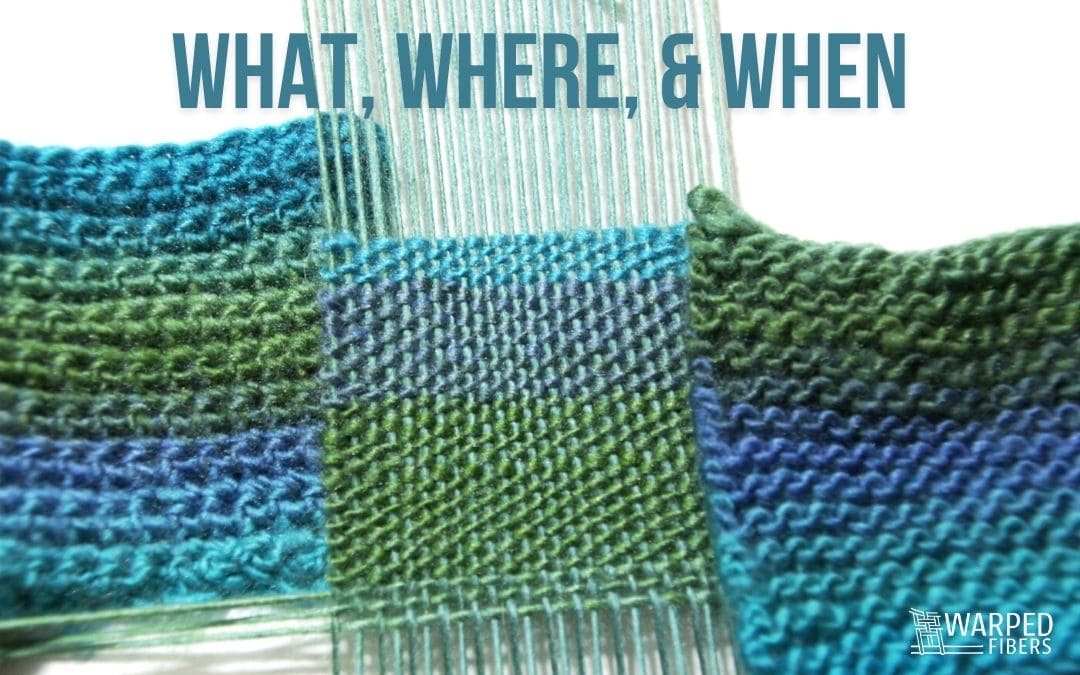

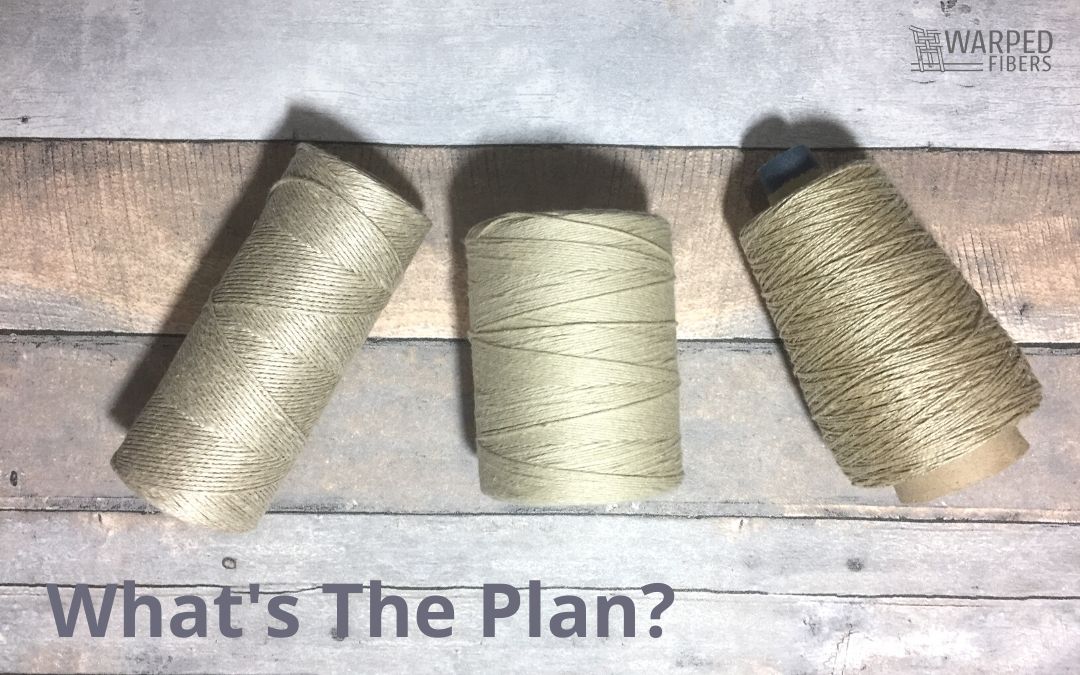

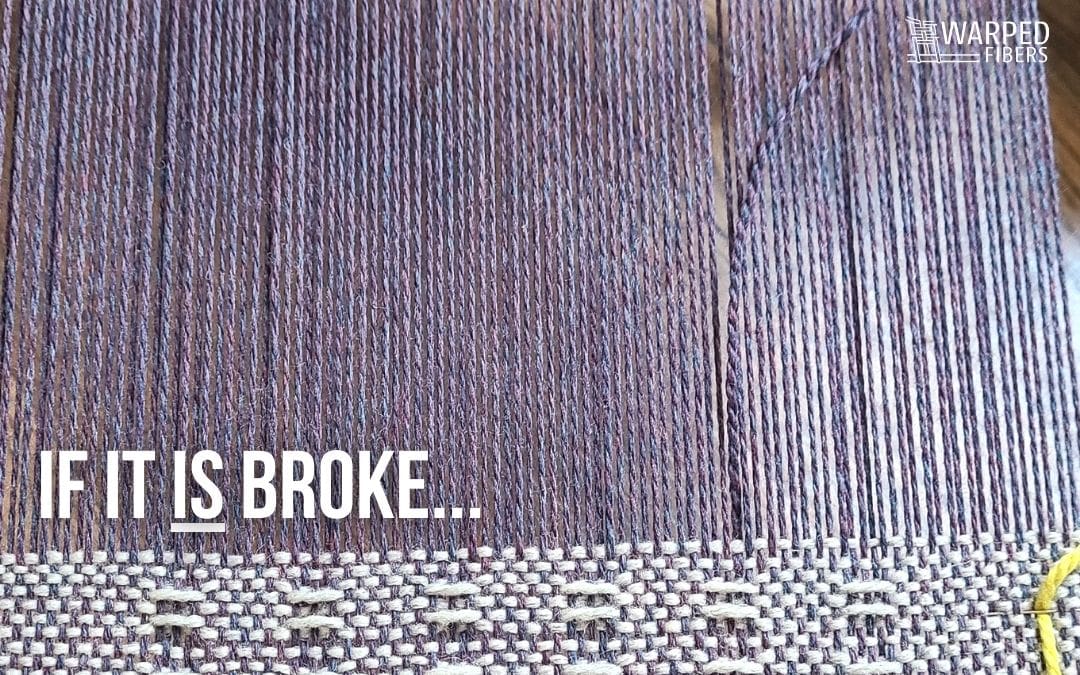

Will the plastic break down over time? I had a plastic bag full of roving degrade into little flakes
I have never had any issues with my plastic bag yarn breaking down over time, but to be fair, I have not done extensive testing. I would say: use at your own risk.
Hello, I’m interested in upcycling and I usually work in weaving. What I do these days is weaving using cassette tapes! It may be awkward because it is not an English speaking country, but I have seen your writing for a long time and your writing has been a great help to me. Thank you!
I’m so happy my writing has helped you 🙂 Weaving with cassette tapes sounds awesome! What a great idea!
Do you take plastic bag donations? I thought it is a good way to use all these bags I have. I have TA in my hands and cannot weave but I could donate
I don’t need any more plastic bags. Thank you though! You could always take them to a grocery store for recycling if you can’t reuse them.